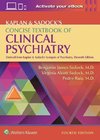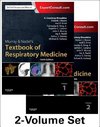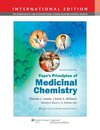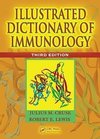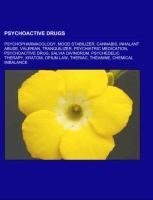
Psychoactive drugs
Source: Wikipedia. Pages: 64. Chapters: Psychopharmacology, Mood stabilizer, Cannabis, Inhalant abuse, Valerian, Tranquilizer, Psychiatric medication, Psychoactive drug, Salvia divinorum, Psychedelic therapy, Kratom, Opium Law, Theriac, Theanine, Chemical... Viac o knihe
Produkt je dočasne nedostupný
17.78 €
bežná cena: 20.20 €
O knihe
Source: Wikipedia. Pages: 64. Chapters: Psychopharmacology, Mood stabilizer, Cannabis, Inhalant abuse, Valerian, Tranquilizer, Psychiatric medication, Psychoactive drug, Salvia divinorum, Psychedelic therapy, Kratom, Opium Law, Theriac, Theanine, Chemical imbalance, List of psychiatric medications, Harmine, Euphoriant, Spins, Cannabis sativa, Lactucarium, List of psychotropic medications, Cannabis indica, Diphenylprolinol, CDPPB, Medication phobia, Depressant, Speedball, Texas Medication Algorithm Project, Psychotomimetic, Pharmacological Calvinism, 3,4-(Methylenedioxyphenyl)-2-propanone, 6-CAT, Psychopharmacology revolution, Kavain, Hard and soft drugs, Bufothionine, Solenostemon scutellarioides, Dieticyclidine, Bufotoxin, Kavalactone, Addiction Research Center Inventory, Dimethoxymethamphetamine, Norepinephrine-dopamine disinhibitor, Rush, Serenic, Eugeroic, Zombie dust, Journal of Psychoactive Drugs, Activation syndrome, Narcotization, Drug-naïve, Vesparax, Augmentation. Excerpt: Salvia divinorum (also known as Diviner's Sage, Ska María Pastora, Seer's Sage, and by its genus name Salvia) is a psychoactive plant which can induce dissociative effects and is a potent producer of "visions" and other hallucinatory experiences. Its native habitat is within cloud forest in the isolated Sierra Mazateca of Oaxaca, Mexico, growing in shady and moist locations. The plant grows to over a meter high, has hollow square stems, large leaves, and occasional white flowers with violet calyx. Botanists have not determined whether Salvia divinorum is a cultigen or a hybrid; native plants reproduce vegetatively, rarely producing viable seed. Salvia divinorum has a long and continuous tradition of religious use by Mazatec shamans, who use it to facilitate visionary states of consciousness during spiritual healing sessions. Most of the plant's local common names allude to the Mazatec belief that the plant is an incarnation of the Virgin Mary, with its ritual use also invoking that relationship. Its active psychoactive constituent is a structurally unique diterpenoid called salvinorin A, a potent ¿-opioid and D2 receptor agonist. Salvia divinorum is generally understood to be of low toxicity (high LD50) and low addictive potential since it is a ¿-opioid agonist. Salvia divinorum remains legal in most countries and, within the United States, is legal in the majority of states. However, some have called for its prohibition. While not currently regulated by US federal drug laws, several states have passed laws criminalizing the substance. Some proposed state bills have failed to progress and have not been made into law (with motions having been voted down or otherwise dying in committee stages). There have not been many publicized prosecutions of individuals violating anti-salvia laws in the few countries and states in which it has been made illegal. Salvia divinorum is native to the Sierra Mazateca in Oaxaca, Mexico, where it is still used by the Mazatec, primarily to
- Vydavateľstvo: Books LLC, Reference Series
- Formát: Paperback
- Jazyk:
- ISBN: 9781156819654



 Anglický jazyk
Anglický jazyk 